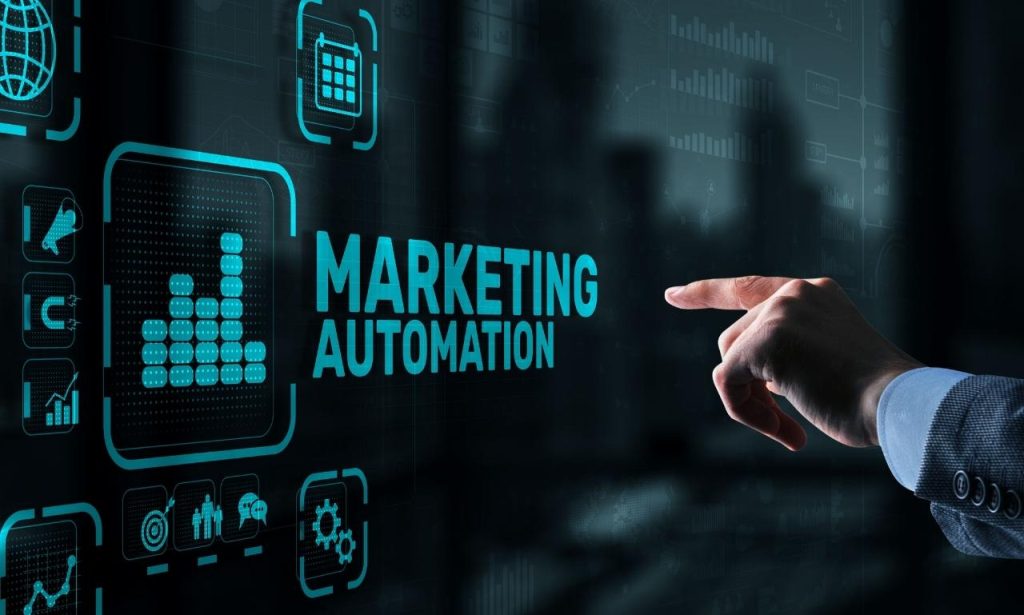The manufacturing world has changed dramatically in recent years. Competition is fiercer than ever before. Many manufacturers still rely on word-of-mouth referrals and trade shows. These methods worked well in the past. But times have changed. Your customers now search online first. They research options before contacting sales teams. Without a strong online presence, you’re missing opportunities. Your competitors might be stealing your potential customers right now. A solid digital marketing strategy can change this situation. It helps manufacturers connect with buyers at critical decision points. Ready to transform your manufacturing business? Let’s explore how to build an effective digital marketing plan.
What are the Different Types of Marketing?

Marketing takes various forms for manufacturing businesses. Traditional marketing includes print ads, direct mail, and trade shows. These tactics still have their place in certain situations, and many manufacturers have relied on them for decades.
Digital marketing encompasses websites, social media, email campaigns, and search optimization. It allows for better targeting and measurable results. Your potential customers are online, searching for solutions.
Content marketing focuses on creating helpful resources for your audience. This might include blog posts, videos, or white papers. Good content builds trust with industrial buyers.
Social media marketing helps manufacturers build relationships with their audience. LinkedIn works exceptionally well for industrial companies. Regular posting keeps your brand visible.
Email marketing remains one of the most effective communication channels. It nurtures prospects through the sales cycle. Many manufacturing buyers prefer email for business communications.
Why Should Manufacturers Use Digital Marketing?
Digital marketing offers unique advantages for manufacturing companies. Your complex products need a proper explanation. Online content can showcase your expertise in ways that catalogs cannot.
The industrial buying process has changed significantly. B2B buyers complete nearly 70% of their journey before contacting sales. They research solutions online first. Digital marketing ensures you’re visible during this research phase.
Cost-effectiveness makes digital marketing attractive for manufacturers. Compared to trade shows, online campaigns often deliver better ROI. You can start small and scale up successful tactics.
Data from digital marketing provides valuable insights. You can see which products generate interest. Customer behavior patterns become clear. These insights help improve both marketing and products.
Global reach becomes possible even for smaller manufacturers. Your digital presence works 24/7 across time zones. New markets become accessible without physical travel. This expands your business opportunities significantly.
5 steps to creating an online marketing plan for manufacturers
Determine your desired future state
Begin with a clear vision for your manufacturing business. What does success look like in one year? Three years? Think beyond just sales numbers. Consider market position and brand perception.
Identify specific, measurable goals for your digital efforts. For example, you might want to generate 30 qualified leads monthly or increase website traffic by 50%. Setting clear targets creates focus.
Your ideal customer profile deserves careful consideration. Who makes buying decisions for your products? What problems keep them awake at night? Understanding their pain points shapes your entire strategy.
Consider your competitive advantages from a digital perspective. What makes your manufacturing process unique? How can you highlight these differences online? Your strategy should consistently emphasize these strengths.
Budget planning must align with your goals. Digital marketing isn’t free, but it’s scalable. Start with initiatives that promise the quickest return. Reinvest early wins into expanded efforts.
Research the market from an online standpoint
Market research takes on new dimensions in the digital realm. Begin by analyzing competitor websites and social accounts. What topics do they discuss? How do they position themselves? This reveals market gaps.
Keywords drive online visibility for manufacturing businesses. Identify terms your potential customers use when searching. Tools like Google’s Keyword Planner help discover these phrases.
Industry forums and publications offer glimpses into buyer concerns. What questions appear repeatedly? Which problems seem most pressing? These insights guide your content creation.
Current customers provide invaluable feedback about their buying journey. Ask how they found you. What information helped their decision? Their experiences highlight both strengths and weaknesses.
Technology trends impact manufacturing marketing significantly. Automation, AI, and sustainability concerns influence buyer priorities. Your strategy must address these evolving needs.
Decide traffic sources
Traffic sources require strategic selection for manufacturing businesses. Search engines remain crucial for industrial buyers. They research solutions through Google and industry directories. Invest in both organic and paid search.
Social media platforms vary in effectiveness for manufacturers. LinkedIn typically delivers the best results. It’s where professional decision-makers spend time. Facebook and Instagram work better for some manufacturing niches.
Industry partnerships can drive highly qualified traffic. Collaborating with complementary businesses expands your reach. Their endorsement builds instant credibility with new prospects.
Email marketing delivers impressive ROI for manufacturers. Regular newsletters keep your company top-of-mind, and product announcements reach interested parties directly. Build your list systematically.
Content distribution networks help spread your manufacturing expertise. Guest posts on industry websites reach established audiences, and sharing through multiple channels maximizes each piece of content’s value.
Redesign your website

Your website serves as the hub of all digital marketing efforts. First impressions happen in milliseconds. Clean design signals professionalism. Navigation should feel intuitive to industrial buyers.
Mobile optimization is non-negotiable today. Many engineers and purchasing agents browse on phones. Your site must function perfectly across all devices. Test thoroughly before launching.
Content organization needs careful planning for manufacturing sites. Group related products logically. Make specifications easily accessible. Demonstrate applications through case studies and videos.
Call-to-action elements guide visitors toward conversion. Every page should have clear next steps. Offer multiple contact options for different buyer preferences. Remove friction from inquiry processes.
Loading speed affects user experience and search rankings. Compress images without sacrificing quality, minimize unnecessary code, and regularly perform speed testing to identify issues quickly.
Track, analyze, and optimize (ongoing)
Analytics form the backbone of manufacturing marketing improvement. Set up proper tracking before launching campaigns. Google Analytics provides essential visitor insights. Install it correctly.
Key performance indicators deserve regular review. Lead generation numbers tell part of the story. Conversion rates reveal effectiveness. Return visitors indicate growing interest. Monitor these metrics monthly.
Data-driven decisions consistently outperform gut feelings. Test different approaches systematically. Headlines, images, and calls-to-action can all be optimized. Let results guide your next steps.
Continuous improvement requires honest assessment. Some tactics will underperform expectations. Recognize failures quickly. Redirect resources toward more promising opportunities. This agility creates competitive advantage.
Regular reporting keeps stakeholders informed about progress. Create simple dashboards showing key metrics. Highlight wins and lessons learned. Connect marketing activities to business results clearly.
Who Should Do My Marketing?
Internal Marketing Team
Building an in-house marketing team offers certain advantages. Your staff develops deep product knowledge. They understand manufacturing processes intimately. This expertise translates into authentic content.
Team members focus exclusively on your business goals. They’re available for quick project turnarounds. Marketing priorities remain aligned with overall company direction. Communication happens seamlessly.
Cost considerations favor internal teams for certain manufacturers. Salaries represent fixed expenses rather than variable agency fees. Skills development builds valuable company assets. Team capacity grows over time.
Challenges include recruiting specialized talent. Digital marketing encompasses many disciplines. Finding experts in manufacturing contexts proves difficult. Smaller companies often struggle with this aspect.
Training and technology require ongoing investment. Marketing tools and tactics evolve rapidly. Keeping internal teams current demands commitment. Budget for continuous professional development.
Outside Agency
Agencies bring specialized expertise to manufacturing marketing. They’ve likely solved similar challenges before. Their experience crosses multiple industries. This perspective generates fresh ideas.
Resource flexibility makes agencies attractive for many manufacturers. You access specialists without full-time salaries. Projects scale up or down as needed. This adaptability suits varying budget cycles.
Technology access comes built into agency relationships. They maintain subscriptions to premium tools. Their software investments benefit all clients. This arrangement often proves cost-effective.
Potential drawbacks include less manufacturing-specific knowledge. Some agencies lack industrial experience. They might not understand complex sales cycles. Interview carefully about relevant case studies.
Communication requires more structured processes with external teams. Regular updates become essential. Clear feedback channels prevent misunderstandings. Budget time for proper agency management.
Combination of the Two
Hybrid approaches offer the best of both worlds for many manufacturers. Internal teams handle day-to-day execution. Agencies provide strategic guidance and specialized skills. This partnership maximizes strengths.
Clear role definition prevents confusion in hybrid models. Document responsibilities explicitly. Establish communication protocols early. Regular coordination meetings maintain alignment.
Knowledge transfer should flow in both directions. Agencies share marketing expertise. Internal teams contribute product insights. This exchange enriches both parties.
Cost efficiency often improves with thoughtful hybrid structures. Core functions stay in-house. Specialized projects go to agencies. This balance optimizes the marketing budget.
Scalability becomes easier with mixed resources. Ramp up activities during product launches. Maintain baseline presence during slower periods. This flexibility suits manufacturing business cycles.
5 questions to ask an agency before starting a project:
- What experience do you have with manufacturing clients? Ask for specific examples. Look for familiarity with complex sales cycles. Their past work reveals compatibility with your needs.
- How do you measure success for industrial marketing? Good agencies track more than just traffic. They connect activities to qualified leads. They understand the manufacturing sales process.
- Who will work directly on our account? Meet team members before signing contracts. Ensure they understand technical concepts. Chemistry matters for long-term partnerships.
- What is your content creation process for technical subjects? Content quality determines marketing success. Ask how they handle complex topics. Their approach should inspire confidence.
- How do you stay current with digital marketing trends? The digital landscape changes constantly. Good agencies invest in continuous learning. They should explain their professional development practices.
What Kind of Digital Marketing Program Do I Need?
Manufacturing businesses need customized marketing approaches. No single formula works for everyone. Your specific products, customers, and goals shape the optimal strategy.
Budget realities influence program scope. Start with fundamentals like website optimization. Add components as resources allow. Even modest budgets can drive meaningful results.
Sales cycle length affects tactical choices. Long purchasing processes need nurturing campaigns. Complex products require educational content. Your program should align with buyer behavior.
Competitive pressure may dictate aggressive strategies. Crowded markets need differentiation tactics. Emerging segments allow for thought leadership. When planning, consider your position.
Business objectives ultimately determine program structure. Growth goals require lead generation focus. Retention priorities need customer communication plans. Ensure marketing supportsthe broader company direction.
Best Digital Marketing Automation Tools For Manufacturers

Marketing automation saves valuable time for busy manufacturers. Email platforms like Mailchimp or Constant Contact streamline communication. They manage lists and track engagement. Scheduled campaigns maintain consistent presence.
Customer relationship management systems organize prospect data. Salesforce and HubSpot integrate marketing with sales processes and track interactions across touchpoints, improving conversion rates.
Content management systems simplify website updates. WordPress offers flexibility for manufacturing sites. Regular blog posts become manageable, and product information stays current.
Social media scheduling tools maintain a consistent presence. Buffer and Hootsuite prepare posts in advance. They recommend optimal posting times. Analytics show which content performs best.
Analytics platforms reveal marketing performance trends, Google Analytics provides website insights, and dashboard tools visualize complex data. These insights drive continuous improvement.
Conclusion
Digital marketing offers tremendous opportunities for manufacturing businesses. The steps outlined provide a roadmap for success. Start with clear goals and research. Choose appropriate channels for your audience. Build a website that converts visitors. Measure results and adapt continuously.
Implementation requires commitment and patience. Manufacturing sales cycles typically run longer than consumer purchases, and marketing results follow similar timelines. Stay consistent with your efforts.
The manufacturing landscape continues to evolve rapidly. Digital strategies keep your business visible to modern buyers, who research extensively before contacting sales teams. Meet them where they search for solutions.
Begin your digital marketing journey today. Take one step at a time. Each improvement builds on previous efforts. The manufacturers who embrace these approaches gain a competitive advantage. They connect with buyers earlier in the decision process. This position leads to sustainable growth.
Also Read: How to Use Video for a More Effective Content Marketing Strategy
FAQs
Most manufacturers allocate 2-10% of revenue to marketing. Start conservatively and increase based on results.
Expect 3-6 months for meaningful data. Some tactics like paid search can show faster results.
LinkedIn consistently outperforms others for industrial businesses. Focus efforts there first.
Yes. Technical buyers seek educational content before purchasing. It builds trust and demonstrates expertise.
At minimum, refresh content monthly. Add product updates immediately. Complete redesigns typically occur every 2-3 years.



